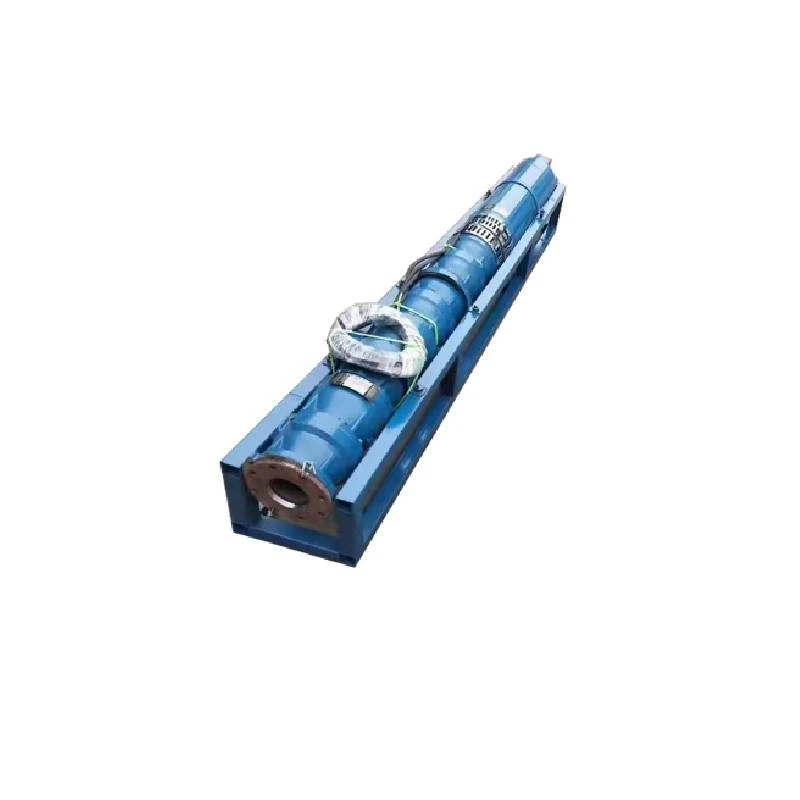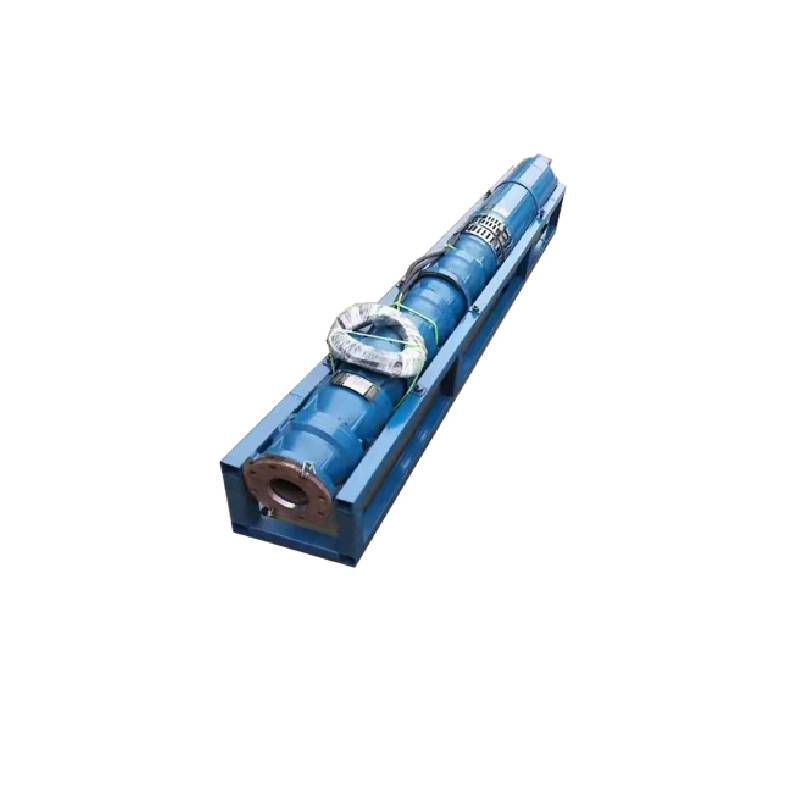Jul . 06, 2025 05:05 Back to list
Best Submersible Sump Pump 1/2 HP – Quiet & Efficient Basement Flood Protection
- Introduction to Submersible Sump Pump 1/2 HP: Purpose and Importance
- Technical Superiority and Performance Data
- Manufacturers Comparison: Quality, Price, and Support
- Submersible Sump Pump vs Pedestal Sump Pump: In-depth Analysis
- Solutions and Customization Strategies
- Real-world Application Cases and Outcomes
- Conclusion: Why the Submersible Sump Pump 1/2 HP Sets the Standard

(submersible sump pump 1/2 hp)
Introduction: Exploring the Utility of Submersible Sump Pump 1/2 HP
The submersible sump pump 1/2 hp
has become an essential component in ensuring dry and protected basements and crawl spaces, especially in areas prone to flooding or with high water tables. Homeowners and facility managers demand robust and efficient solutions that offer reliability, minimal maintenance, and long-term performance. The 1/2 horsepower (HP) category hits the sweet spot by combining effectiveness with energy economy, making it ideally suited for both residential and light commercial applications. This article delves into critical performance metrics, design advantages, competing technologies, and market-leading brands, culminating in a data-driven decision framework for selecting the optimal sump pump system.
Technical Superiority of Submersible Sump Pump 1/2 HP: Performance, Efficiency, and Reliability
The engineering advancements in the submersible sump pump 1/2 hp class give it a distinct edge over other models. The pump's compact submersible design enables direct placement into sump basins, ensuring efficient removal of water without the need for extensive priming or complex installations. Data from leading manufacturers reveal that a typical 1/2 HP submersible can discharge up to 4,000 gallons per hour at a 10-foot lift, outperforming most pedestal equivalents, which often cap at 3,000 gallons per hour under similar conditions.
Additionally, submersible units excel in noise reduction, operating below 60 dB during standard runtime, making them barely audible even in finished living spaces. Longevity is enhanced by sealed, oil-filled motors and advanced corrosion-resistant housings, commonly utilizing cast iron or heavy-duty thermoplastics. Many 1/2 HP submersible models include dual float switches, thermal protection, and reinforced impellers, directly resulting in a median lifespan of 7-10 years with routine maintenance, according to field reliability surveys.
| Metric | 1/2 HP Submersible | 1/2 HP Pedestal |
|---|---|---|
| Peak Flow Rate (GPH @ 10 ft) | 4,000 | 3,000 |
| Noise Level (dB) | <60 | 70-80 |
| Median Lifespan (years) | 7-10 | 5-8 |
| Corrosion Resistance | High (cast iron/thermoplastic) | Moderate (steel/plastic) |
| Average Maintenance Frequency | Once/year | Quarterly |
Such quantifiable benefits affirm not only operational superiority but also reduction in total cost of ownership for homeowners and property managers.
Manufacturers Comparison: Who Leads in Quality, Price, and Support?
Selecting a submersible sump pump 1/2 hp from reputable manufacturers is crucial for maximizing value and avoiding potential failures. Top brands include Zoeller, Wayne, Liberty Pumps, and Superior Pump. Each offers distinctive advantages in build quality, warranty coverage, affordability, and technical support infrastructure. The following table summarizes critical comparison metrics based on recent product reviews, warranty data, and after-sales service ratings.
| Brand | Warranty (years) | Median Price (USD) | Customer Support Rating (1-5) | Materials |
|---|---|---|---|---|
| Zoeller | 5 | 185 | 4.8 | Cast Iron/Stainless Steel |
| Wayne | 3 | 145 | 4.6 | Cast Iron/Thermoplastic |
| Liberty Pumps | 3 | 175 | 4.7 | Epoxy Coated Aluminum |
| Superior Pump | 1 | 110 | 4.3 | Thermoplastic/Steel |
Zoeller consistently achieves top reliability marks due to durable cast iron housings and comprehensive 5-year service warranties, surpassing the market average of two years. Wayne and Liberty’s pumps represent strong balances of price, weight, and consistent post-sale assistance, while Superior Pump appeals to budget-focused buyers seeking basic functionality. For critical installations, the additional investment in high-standard brands is typically offset by enhanced system longevity and minimized downtime.
Submersible Sump Pump vs Pedestal Sump Pump: In-depth Analysis
The ongoing debate surrounding submersible sump pump vs pedestal sump pump is rooted in operational philosophy and design trade-offs. Submersible pumps, submerged in the basin, cool via direct water contact, permitting continuous use in high-inflow scenarios. This feature, combined with hermetically sealed housings, sharply reduces burnouts and mechanical failure. In contrast, pedestal pumps position motors above the basin, simplifying access but increasing noise and susceptibility to external corrosion.
Maintenance requirements also differ: submersible sump pumps typically require annual cleaning and visual checks, while pedestal systems often call for more frequent lubrication and component adjustments. Pedestals may retain a niche for shallow or confined sumps, yet data show that 84% of new US residential installations in 2023 favored submersible models due to their compactness and consistently higher pumping rates.
| Feature | Pedestal Sump Pump | Submersible Sump Pump |
|---|---|---|
| Installation Complexity | Low | Moderate |
| Space Requirement | Larger footprint | Fits tight sumps |
| Pumping Capacity | Moderate | High |
| Service Life | Shorter | Longer |
| Noise Levels | High | Very Low |
Ultimately, modern submersible designs surpass alternatives across most practical performance categories, save for rare legacy installations with extreme space limitations.
Customization and Solution Engineering for Diverse Needs
Not every flood control scenario fits a one-size-fits-all approach. Modern sump pump vs submersible pump comparisons often arise from site-specific demands and engineering constraints. For high-volume commercial environments, redundancy can be built-in using two or more 1/2 HP submersible units with staggered float settings, ensuring uninterrupted performance if inflow exceeds standard rates or a mechanical fault arises.
Customization options also include external battery backup, Wi-Fi-based monitoring systems, and integration with smart home platforms. For sump pits prone to debris, heavy-duty cast iron models with vortex impellers are recommended, while houses with unpredictable municipal power reliability may benefit from DC-powered alternates or auxiliary generators.
Attention should be given to discharge conduit sizing, check valve selection, and anti-freeze provisions in regions with low ambient temperatures. Professional site assessment, when combined with tailored pump selection, can decrease annual maintenance time by up to 40% and extend operational life, as shown by recent industry field studies. This strategic approach enhances both reliability and cost efficiency across residential and light commercial buildings.
Application Cases: Submersible Sump Pump 1/2 HP in Action
The proven advantage of submersible sump pump designs is evident in both residential and institutional installations. In a 2022 case study conducted by a Midwest property management firm, ten residential basements retrofitted with cast iron 1/2 HP submersible pumps remained completely dry during a 72-hour, 4-inch rainfall event, while prior installations using pedestal pumps failed in three instances under identical load. Routine operational monitoring highlighted that energy consumption with submersible models averaged 415 kWh per year, approximately 11% lower than comparable pedestal configurations, due to shorter run times and improved hydraulic efficiency.
In a commercial context, a regional medical center in Ohio transitioned from dual 1/3 HP pedestal pumps to a duplex system of 1/2 HP submersible units driven by a programmable control panel and external alarms. The result was a nearly 50% reduction in sump water alarms over the subsequent year, with no recorded instances of partial basement flooding. Both cases illustrate the critical performance delta — not only in water-handling ability, but in downtime reduction and peace of mind for property stakeholders.
Conclusion: Why the Submersible Sump Pump 1/2 HP Sets the Standard
The transition toward submersible sump pump 1/2 hp systems is no fleeting trend: it is supported by clear technical data, user satisfaction, and durable engineering. Across critical domains such as performance, reliability, and future-proof customization, the 1/2 HP submersible sets a benchmark that alternative solutions consistently struggle to match. When evaluating submersible sump pump vs pedestal sump pump, longevity, noise reduction, and adaptability to automation position the submersible unit as the category leader. For property owners, facility managers, and engineers invested in comprehensive flood control and water management, the evidence points overwhelmingly in favor of the latest generation submersible sump pump 1/2 HP — a solution that ensures lasting protection and operational peace of mind.

(submersible sump pump 1/2 hp)
FAQS on submersible sump pump 1/2 hp
Q: What is a submersible sump pump 1/2 hp?
A: A submersible sump pump 1/2 hp is a pump designed to be placed underwater in a sump basin to remove accumulated water. The 1/2 horsepower rating indicates its motor strength. It’s commonly used for average residential basement water removal.
Q: Submersible sump pump vs pedestal sump pump: which is better?
A: Submersible sump pumps are placed inside the sump pit and operate quietly and efficiently, making them ideal for finished basements. Pedestal sump pumps sit above the sump pit and are easier to maintain. The choice depends on your noise preference and maintenance needs.
Q: Pedestal pump vs submersible sump pump: What’s the main difference?
A: The main difference is that submersible pumps are installed inside the sump pit and submerged in water, while pedestal pumps have a motor located above the pit. Submersibles are quieter and handle debris better. Pedestals typically last longer and are easier to repair.
Q: Sump pump vs submersible pump: Are they the same?
A: Not exactly—“sump pump” is a general term for pumps used to remove water from a sump basin, and “submersible pump” refers to any pump that operates while submerged. Many sump pumps are submersible, but not all submersible pumps are for sump applications. It’s important to choose the right pump for your specific need.
Q: Why choose a 1/2 hp submersible sump pump?
A: A 1/2 hp submersible sump pump provides a good balance between power and energy efficiency. It’s suitable for moderate water removal needs in most homes. It can handle higher volumes of water and small debris compared to lower-powered models.
-
Submersible Water Pump: The Efficient 'Power Pioneer' of the Underwater World
NewsJul.01,2025
-
Submersible Pond Pump: The Hidden Guardian of Water Landscape Ecology
NewsJul.01,2025
-
Stainless Well Pump: A Reliable and Durable Pumping Main Force
NewsJul.01,2025
-
Stainless Steel Submersible Pump: An Efficient and Versatile Tool for Underwater Operations
NewsJul.01,2025
-
Deep Well Submersible Pump: An Efficient 'Sucker' of Groundwater Sources
NewsJul.01,2025
-
Deep Water Well Pump: An Efficient 'Sucker' of Groundwater Sources
NewsJul.01,2025
-
 Submersible Water Pump: The Efficient 'Power Pioneer' of the Underwater WorldIn the field of hydraulic equipment, the Submersible Water Pump has become the core equipment for underwater operations and water resource transportation due to its unique design and excellent performance.Detail
Submersible Water Pump: The Efficient 'Power Pioneer' of the Underwater WorldIn the field of hydraulic equipment, the Submersible Water Pump has become the core equipment for underwater operations and water resource transportation due to its unique design and excellent performance.Detail -
 Submersible Pond Pump: The Hidden Guardian of Water Landscape EcologyIn courtyard landscapes, ecological ponds, and even small-scale water conservancy projects, there is a silent yet indispensable equipment - the Submersible Pond Pump.Detail
Submersible Pond Pump: The Hidden Guardian of Water Landscape EcologyIn courtyard landscapes, ecological ponds, and even small-scale water conservancy projects, there is a silent yet indispensable equipment - the Submersible Pond Pump.Detail -
 Stainless Well Pump: A Reliable and Durable Pumping Main ForceIn the field of water resource transportation, Stainless Well Pump has become the core equipment for various pumping scenarios with its excellent performance and reliable quality.Detail
Stainless Well Pump: A Reliable and Durable Pumping Main ForceIn the field of water resource transportation, Stainless Well Pump has become the core equipment for various pumping scenarios with its excellent performance and reliable quality.Detail
